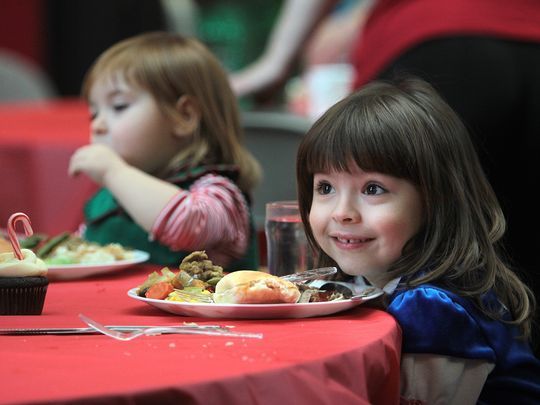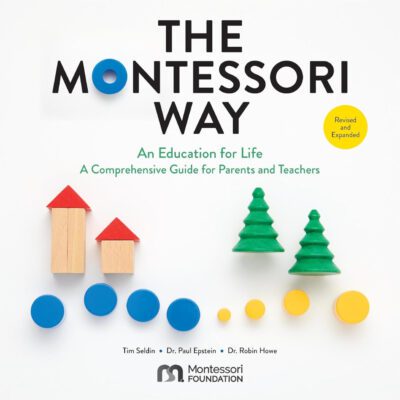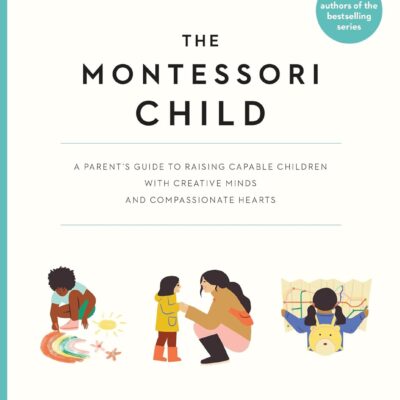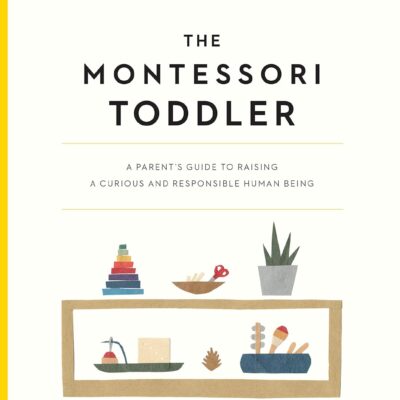Editor’s Note: The following is an excerpt from Following the Family: Practical Lessons for Educating Human Potential, a new book by Jacqueline Cossentino, Ed.D., Senior Associate and Director of Research at the National Center for Montessori in the Public Sector.* Following the Family, along with the US Montessori Census, is the result of a collaborative research project: What, Why and How: Establishing a Framework for Researching Montessori.
Following the Family is about relationships. It’s also about poverty, early learning, community development, and education policy. But mostly it’s about relationships.
Told through the stories of four pioneering programs that serve young children and their families, Following the Family explores how these programs have succeeded in transforming the life paths of thousands of families in some of our nation’s most vulnerable neighborhoods. Each program is unique in its organizational culture and, at the same time, all four are intimately linked through a common set of principles that guide their practice.
Crossway Montessori Communities in Kensington, Maryland, builds social capital through intergenerational learning focused on single mothers and their young children. Family Star Montessori, in Denver Colorado, uses Early Head Start and Head Start funding to provide continuous, family-centered education starting at three months of age. Lumin Education, in Dallas Texas, links multiple funding streams, including Early Head Start, to provide a pathway leading from the toddler years all the way through third grade. And Montessori Partners Serving All Children in St. Paul, Minnesota, is building a network of providers, all committed to high standards of Montessori practice, all serving vulnerable populations, and all engaged in
strengthening their local communities.
While Montessori education has been part of the American educational landscape for more than a century, it is not commonly understood as an approach to ameliorating poverty or social transformation—at least not by the general public or policymakers. This is because Montessori education in the US has, since the 1960s, tended to be most visible in affluent communities. Rising out of a post-war economic boom, which led to a new population of college educated mothers searching for better solutions for their children, Montessori surged as a boutique pre-school option in the leafy suburbs of major US cities.
In the sixties, better education meant student-centered, hands-on, constructivist classrooms, which nurtured children’s natural tendencies to explore and develop. Today, a similar trend is visible. After nearly two decades of efforts to close a stark and persistent achievement gap through back-to-basics teaching driven by high-stakes testing, teachers, funders, policymakers, and, most of all, parents are fed up with the impact of a narrowed curriculum: the stress caused by excessive testing and the general joylessness that characterizes many public schools today. Calls for deep learning, ideal learning, big-picture learning, and re-imagined learning driven by play, projects, and personalization are growing louder and more frequent by the day.
Moreover, these calls, which are part of a predicable pendulum swing in the culture of education, are now buttressed by science. And not just science, but brain science. Neuropsychologists now offer evidence proving that healthy brain development requires things such as: free movement; varied social interactions: multi-sensory experiences; complex learning environments; and lots of opportunities to focus, experiment, and learn from mistakes. Cognitive scientists are also addressing the timing of human development, affirming that early childhood constitutes a major period of rapid and consequential brain development.
Birth to six, indeed, is no longer understood to be the period before real learning begins. Rather, study after study supported by brain scan after brain scan demonstrates that 85 percent of the human brain’s development is complete by age five. Not only is growth rapid during this period, but the brain’s plasticity makes the acquisition of important executive function skills such as inhibition, working memory, and cognitive flexibility especially robust at this time. Taken together, this research confirms not only that these years are most significant in determining future success, but that investing in the very young produces dramatic economic as well as developmental returns.
Perhaps, not surprisingly, the proliferation of new research on neurodevelopment, early learning, and cognition has, in part, fueled significant policy initiatives at all levels. Recent federal investments, such as the Race to the Top – Early Learning Challenge, combined with legislation enabling state-supported pre-Kindergarten in 44 states have made early learning much more common for many more people. In 2015, almost 1.4 million US four-year-olds were enrolled in a state-funded pre-Kindergarten program, a jump of about 37,000 from the prior year.
Within this convergence of research, public opinion, and political will, a new and expanding consensus has emerged on what “better education” entails. It should start early. It should support the development of executive functions and social-emotional skills. It should be personalized, hands-on, and deeply engaging to students. It should prepare students not just to pass tests, but to participate in an increasingly complex social, political, and economic world, a world in which creativity and innovation are necessary not just for economic participation, but for human flourishing. And within this environment, Montessori is slowly but surely drawing attention to itself as a model of education that not only does all these things but has been doing them steadily for the past hundred years.
And not just for affluent families. Despite public perception, Montessori is firmly established as a public school option for more than 125,000 US children, and that number grows by approximately 5 percent annually. Slightly under half of the children who attend public Montessori schools live in poverty, and many are located in urban centers with especially high concentrations of racial and economic isolation. In cities like Milwaukee, Chicago, Dallas, Denver, Baltimore, Memphis, St. Louis, Hartford, St. Paul, and Washington, DC, public Montessori schools not only serve low-income families, they are integrated communities, serving rich and poor, side by side.
How—and Why—This Book Came to Be
The programs described here represent distillations of the very best that Montessori has to offer American society. They show us what “better education” can look like for very young children and their families. Just as important, they show us how to do it.
I began following these programs in 2011, when I first became engaged with the work of Crossway Montessori Communities. Within the Montessori community, all four programs have been celebrated as exemplars of social reform, and, within their local communities, each has been recognized for its contributions to the social and civic life of its respective city. But the larger story of family-centered, multi-generational, place-based learning, grounded in an ambitious theory of action had not been told. Moreover, just as news of these programs began to spread within the Montessori community, the world outside was beginning
to take deeper notice of early learning and its potential impact on larger issues of social and educational policy.
In 2012 I spent several months embedded at Crossway Montessori Communities, which Executive Director, Kathleen Guinan, describes as “Montessori boarding school for mothers and their children,” aiming to discern the elements of what I came to understand as the Crossway Model. Spending time with Crossway staff and residents was my introduction to the way relationships determine individual and family destiny. The following vignette is drawn from a tour conducted by Guinan inside one of the 46 apartments occupied by Crossway residents.
Abeba
The first thing I notice about the two-bedroom apartment that Abeba and her two daughters (Malia, age 2 and Selassi, age 5) share is how spotlessly clean it is. As we step inside, we are asked to remove our shoes. We pad across the beige-carpeted living room, flooded with natural light from a large window overlooking a garden, and are invited first to inspect the girls’ bedroom, which contains two twin beds, a single white chest of drawers and small table with two child-sized chairs. There are bright calico curtains that match the bedding and family photos of mother and daughters on the chest. Next door, Abeba’s bedroom, the smaller of the two, is also decorated simply and includes more photos of the family trio along with samples of the girls’ art work tacked neatly on the wall.
Abeba has lived at Crossway for two years, and she is likely to stay for at least a year longer. When she arrived, she was pregnant with Malia, seeking refuge from an abusive relationship with Malia’s father. At the urging of a local women’s shelter, Abeba attended one of Crossway’s “Prevention” classes: two-hour workshops focused on explaining how Crossway works and what is necessary to be part of the community. She was inspired by the approach and possibilities described, and soon after the class, Abeba applied to become a resident.
On the stove, a pot of chicken curry is simmering, and Abeba smiles patiently as we coo over the order, the light, the delicious smells, the peacefulness of this home. We have interrupted her as she studies for an upcoming test at the University of Maryland, where she is taking courses leading to a degree in Computer Science. Her books and computer are open on a desk in the living room, where, next to the adult-sized sofa, there is a child-sized seating area and a shelf neatly arranged with books and toys.
We are conscious of Abeba’s time and eager to move on to the next stop on the tour, but Guinan, who is serving as our guide, can’t let us leave without seeing “the closet.” “You won’t believe this,” she says, barely containing her glee. She opens the door to reveal a study in space design. What once was a linen closet has been transformed into meticulously arranged storage space for the girls’ clothes, toys, and books. It looks like an advertisement for a professional organizing service. Items are color coded, with every inch of space maximized. Items still in use by the girls are placed at child level so that both children can share responsibility for keeping the space neat and usable. Abeba explains that she has attempted to imitate the manner in which the children’s classrooms, located on the ground floor of the building, are organized. Since becoming part of the Crossway community, she has come to see a direct relationship between an orderly physical space and a more peaceful emotional life. Guinan softly shakes her head and smiles. This is what keeps her coming to work each day.
Lines and Circles
For Abeba, along with all the other mothers who live at Crossway, the line between poverty and prosperity is both thin and stark. Guinan explains that Crossway is “not a homeless shelter; it’s not for people who are unable to help themselves.” To be admitted, women must demonstrate that they have both the will and the resources to change their lives. Sometimes programs like this are criticized for not “saving” the neediest. Guinan, however, sees it differently. “For these women,” she explains, “this program is the difference between making it and spiraling permanently into poverty.”
Joining the community also means agreeing to a strict set of expectations: signing in and out, observing a curfew, registering any visitors, observing daily rituals, attending weekly meetings and semi-monthly progress reviews. Along with these expectations is a wide and varied set of practical supports. When residents move in, for instance, they are assisted by Crossway staff in setting up their apartments, including locating furniture and living supplies. Communal meals are shared at least bi-weekly, technology and other job training resources are provided in what looks like a hotel business center, and Crossway staff members are available around the clock to respond to challenges residents may be experiencing. This unique blend of structure and support is what distinguishes, not just Crossway, but all four of the programs described in these pages.
Abeba’s closet, in many ways, exemplifies the importance as well as the complexity of structure in supporting families. It is an oasis of order in the midst of what, prior to her arrival at Crossway, had been a chaotic life. Just as important, Abeba, with the assistance of Crossway’s Practical Life Coordinator, was recreating the precise tidiness that characterizes her children’s Montessori classroom. She made this closet as much for them as for her. When Abeba directs her attention to bringing order to her physical environment, she not only produces a space that is functional for her family, she is practicing a skill that is central to gaining control of her life path. Delineating the boundary between what is within and what is beyond her control constitutes a powerful step toward agency and self-efficacy.
Lines, indeed, have multiple meanings for all four programs described here. In addition to serving families that live either on or very close to the poverty line, all four programs aim to offer stability, in part, through clear limits. Finally, all four programs are devoted to supporting people who, in many cases, dwell on the margins of society: immigrants, single mothers, infants and toddlers. These audiences not only represent the highest rates of poverty in the US, they are notoriously under-funded within the non-profit realm, and, as a result, all four programs walk a constant tightrope of financial survival.
But lines are only part of the story. Just as important are the circles of support and relationship that define the way communities are created, nurtured, and enlarged. These programs all operate within in complex constellations of partners, stakeholders, and audiences. They are constantly cultivating relationships between and among disparate circles—housing and community development agencies, health providers, universities, public and independent schools, Montessori trainers, and private funders. They are constantly working to parlay basic, transactional needs, such as childcare, into larger, more encompassing interventions in order to provide transformative opportunities for families and children.
A Way of Thinking About our Work: Montessori as a Theory of Action
“What’s different about us compared to other programs that try to do what we do,” explains Kathleen Guinan,“ is that we have a way of thinking about our work.” She is talking about the way in which the entire Crossway
environment is prepared to meet the needs of its residents, from infants to women in their late teens and twenties. She is talking about the simple, natural beauty of both the interior and exterior space; the gardens, art work, and lighting that make the entire campus look more like a high-end condominium complex than a residential program for single mothers. She is talking about the blend of freedom and limits that characterizes the expectations of both the campus as a whole and the Montessori classrooms on the building’s first floor. She is talking about a constant emphasis on the practical details of living: how to keep your room clean; how to prepare and share a meal; how to write a thank-you note; how to have a conversation; how to be a friend.
This way of thinking is the theory of action that governs everything that happens, not just at Crossway, but at all four programs. Though rooted in Maria Montessori’s theories of child development, these core concepts of beauty, freedom within limits, practical life, and work are applied not just to children, but to all aspects of the organization. When Connie Black describes the core work of her organization as “leading with our ears, listening to what parents and families think, dream, and worry about, so that we can most appropriately respond to needs,” she is articulating core Montessori concepts that are as much about attitude as skills. This stance defines what these organizations are about.
They are about honoring human development as a natural process that requires patience and modeling as much as instruction, and that occurs best in community. They are about building trust one interaction at a time, through intentional listening and careful observation. And, perhaps most of all, they are about respecting all people, especially parents, regardless of their circumstances, as agents of their own destiny, with gifts to offer to their children as well as their communities.
This focus on responsive rather than directive interaction is a signature feature of Montessori education, whose tagline “follow the child,” refers to the way adults are trained to organize all learning around individual children’s needs and interests rather than pre-determined curriculum mandates. All four programs are deeply committed to following the child, yet they understand and organize themselves around the belief that children are always connected to families.
Following the family, therefore, means moving relationships with families to the center of the enterprise of education. It means intentionally creating space-physical, emotional, social, and intellectual—for families to learn how children develop, both at home and at school, and creating meaningful opportunities for families to engage with the program, with one another and with their children.
Montessori Leadership / September 2016 / p 10









